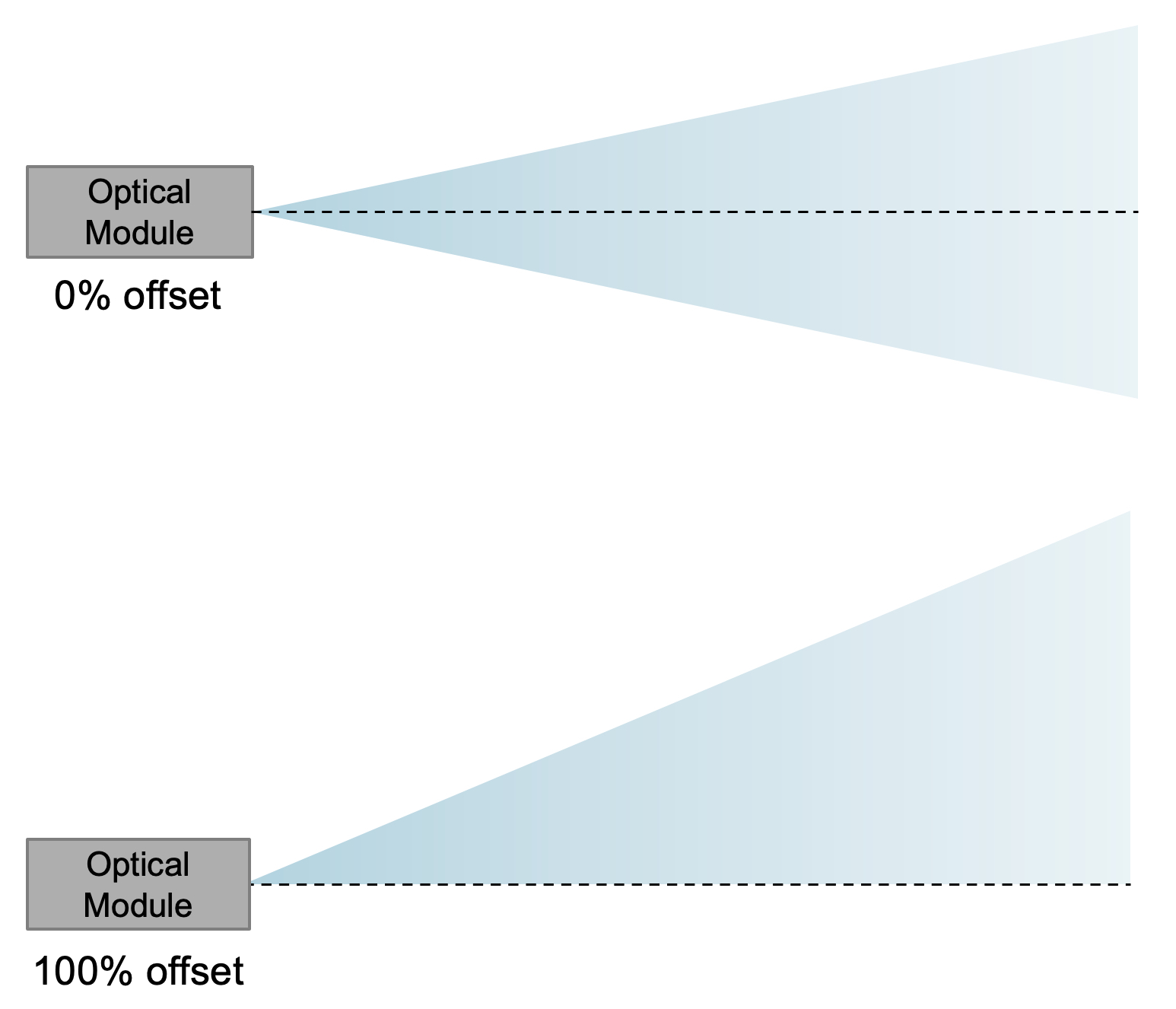DLPY011 September 2022 DLPC3430 , DLPC3432 , DLPC3433
- At a glance
- Authors
- 3
- Smartphone companion projectors: a big-screen experience, anywhere
- Smartphone companion projector benefits
- Technological advancements impacting smartphone companion projectors
- TI DLP Pico technology
- RGB LED illumination
- DLP Pico technology for smartphone companion projectors
- Smartphone companion projector design and tradeoffs
- Size and weight
- Brightness
- Resolution
- Battery life
- Connectivity options
- Product development and supply chain
- Conclusion
Battery life
A smartphone companion projector should be able to operate for at least two hours on battery power, but preferably longer. To extend battery life, a lower brightness mode can be used or a larger battery can be included.
These projection-specific design considerations affect the usability and performance of a smartphone companion projector:
- Throw ratio. The throw
ratio (see Figure 9) describes how large of a projected image a projector creates at a given
distance from the projection surface. It is defined as the ratio of the distance
between the projection lens and the projection surface to the width of the
projected image. For smartphone companion projectors, throw ratios typically
range from 1.0 (short throw) to 1.5 (standard throw). For example, a throw ratio
of 1.5 would create a 2-foot-wide image from 3 feet away. Shorter throw ratios
typically result in larger projection lenses and mirrors, and therefore larger
overall optical modules.
 Figure 9 Throw ratioEquation 1.
Figure 9 Throw ratioEquation 1.where
- d is the distance from the projector lens to the image
- w is the horizontal width of the image
- Offset. Offset (see Figure 10) describes the path of the projected light once it exits the projection lens.
0% offset describes a projector that sends light equally up and down after it
exits the projection lens. 100% offset describes a projector that sends the top
of the image up and keeps the bottom of the image coincident with the projection
lens axis. 100% or higher (tilted upwards) offset is most common, because it
avoids sending the bottom part of a projected image into the surface on which
the projector is resting. However, 0% offset optical designs enable thinner
optical designs and the offset can be compensated for with a projector tilt
mechanism and digital keystone correction.
 Figure 10 Comparison of 0%
offset and 100% offset.
Figure 10 Comparison of 0%
offset and 100% offset. - White point and color temperature. RGB LEDs produce variable white points and color temperatures (the relative mix of RGB light that creates white and intermediate colors), which optical module manufacturers can adjust and program into different user-adjustable modes (vivid, standard, cinema) in a final product. The brightness specification of an optical module can vary depending on the white point. If color accuracy is a key requirement of the final product, a target white point can be specified to the optical module manufacturer.
- Thermal management. A heat spreader or planar copper-fin heat sink is physically sized to achieve a certain brightness specification, given the constraints of the maximum heat load on the DMD, the maximum available illumination drive current and the minimum efficiency of the illumination source. Once the optical module manufacturer’s heat-sink solution is known, an appropriate amount of passive or active cooling (such as a fan) can keep the DMD and the illumination source within their respective recommended operating temperature ranges.
- Focus method. Adjusting the position of the projection lens will focus a smartphone companion projector at the intended projection surface distance. It is possible to adjust the position manually using a focus mechanism or a stepper motor, or by using an external autofocus solution such as camera or depth-sensing solution in combination with a stepper motor. Although an autofocus solution may provide a better user experience, it costs more to integrate.